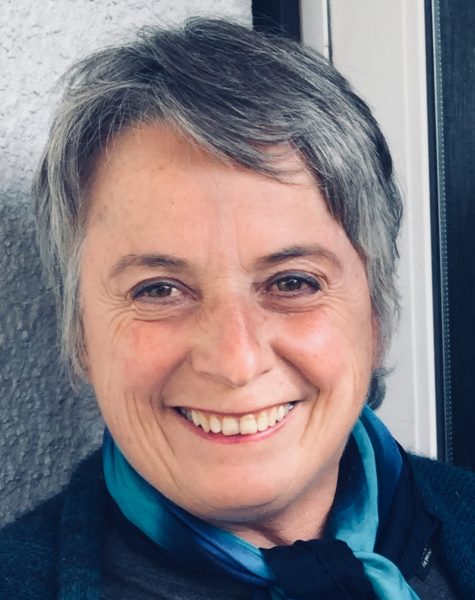Jude Higgins chapbook The Chemist’s House was published in 2017 by V. Press. Meg Pokrass called it “poignant, loving, and profound in emotional impact.” Jude will be giving away a copy of her chapbook AND a copy of the Bath Flash Fiction Volume Two Anthology, The Lobsters Run Free to the author of the story she chooses for publication during her reading week.
You organize Bath Flash Fiction Award, co-run Bath Short Story Award and teach flash fiction at Writing Events Bath. Also, this year you directed the first ever UK literary festival entirely devoted to Flash Fiction. I think it’s safe to say you’re very involved in the flash fiction literary community! What is it about flash that you find so appealing?
I like the way flash fiction connects writers from around the world. In 2017, the three rounds of Bath Flash Fiction Award I founded and organise with the help of Ad Hoc Fiction, attracted over 2000 entries from writers in 44 different countries. ‘One in Twenty-Three’, the first-prize winning story by Helen Rye from the October 2016 round judged by Robert Vaughan was translated into Vietnamese by translator and writer, Nguyen Phan Que Mai and was published in a national newspaper in Vietnam this year. There’s so much energy and excitement within the worldwide Flash Fiction community. This year I met many writers who travelled from all parts of the UK, Ireland, Germany, Switzerland, Austria, Italy the US and New Zealand to attend the inaugural Flash Fiction Festival UK in Bath in June and I also enjoyed meeting others who read at the Flash Fiction Evenings I organise in Bath. I receive a lot of support and motivation for my own writing from the flash fiction community on social media. It’s so much fun. We all need fun.
What kind of story would you love to see in your queue this week?
I like tender stories with a strong voice, the kind of stories that make me think and feel a lot and take me to new places at the end. ‘Popcorn’ by Andrew Mitchell contains those elements. Stories injected with humour about older people who are not falling into a decline would be interesting.
What elements do you think make for a successful flash fiction story?
For me, a story is successful if it keeps resonating long afterwards. I greatly admire the way flash fiction writers create layers of meaning and create a full back story in just a few words. It’s the choice of detail and the absences. ‘Baking’ by Meg Pokrass, a very short piece published by Wigleaf in 2008, uses small unusual details and dialogue to create a strong atmospheric story of a desolate festive holiday. These details suggest so much about the narrator’s past, present and future relationships. James Claffey, in his longer flash fiction, ‘Sins of Omission’, also creates a complete picture of family and community and the confusion of the young narrator by brilliant use of sensory-infused detail and voice.
What do you think flash fiction can do that longer stories can’t?
If the title, the beginning and the ending, the use of details and voice all work together, flash fictions can feel much longer than a short story which generally builds more slowly. The very short form lends itself to more experimental styles. For example, ‘The Cool Box’ by Nod Ghosh, in less than 300 words, spans a life-time of events while at the same time suggesting something about the state of a relationship. The way this flash fiction is written – in ‘one breathless paragraph’ as Kathy Fish puts it – is part of the experience of reading the story. You can hold the entire piece in your consciousness and savour it after reading. In longer stories, you can’t grasp the whole in that way.


 The SmokeLong Grand Micro Contest (The Mikey) is now an annual competition celebrating and compensating the best micro fiction and nonfiction online.
The SmokeLong Grand Micro Contest (The Mikey) is now an annual competition celebrating and compensating the best micro fiction and nonfiction online.